| Recent Featured Videos and Articles | Eastern “Orthodoxy” Refuted | How To Avoid Sin | The Antichrist Identified! | What Fake Christians Get Wrong About Ephesians | Why So Many Can't Believe | “Magicians” Prove A Spiritual World Exists | Amazing Evidence For God | News Links |
| Vatican II “Catholic” Church Exposed | Steps To Convert | Outside The Church There Is No Salvation | E-Exchanges | The Holy Rosary | Padre Pio | Traditional Catholic Issues And Groups | Help Save Souls: Donate |  |


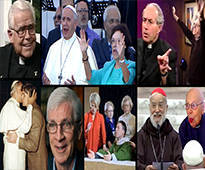
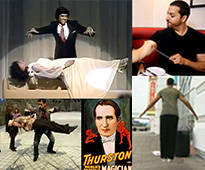


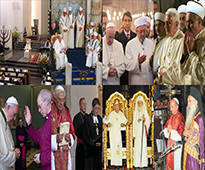


 " />
" />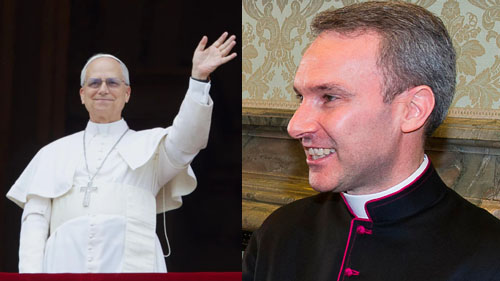 " />
" />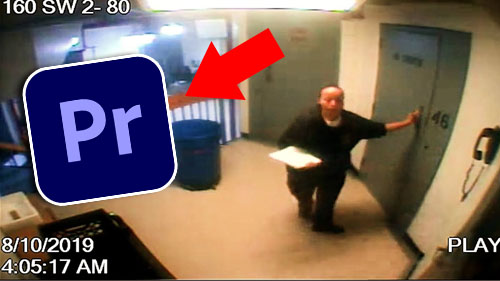 " />
" /> " />
" /> " />
" />




The Council Of Trent Did Not Teach "Baptism Of Desire"
Some people think that baptism of desire is taught by the Council of Trent in Sess. 6, Chap 4 on justification. This video will show why they are wrong. It will also cover some very important new points and quotes. The passage says:
First, this passage has been grossly mistranslated in Denzinger. The mistranslation has been circulated widely. The Latin word ‘sine’ (meaning ‘without’) has been wrongly rendered as ‘except through’. The mistranslation changes the meaning of the statement. Trent does not say that the transition to justification cannot take place except through the laver of regeneration or a desire for it. That would turn the statement into a positive either or alternative. Rather, it says that the transition to justification cannot take place without (sine) the laver of regeneration or a desire for it, as it is written (sicut scriptum est): unless a man is born again of water and the Holy Spirit he cannot enter the Kingdom of God. To say that something cannot take place without ‘x’ is not to say that x is sufficient for that thing to occur.
For example, in the very same session of Trent, in canon 3 on justification, it says:
Well, does that mean if the prevenient inspiration of the Holy Spirit is given a man necessarily believes, hopes and loves as he should. No, it doesn’t. Trent itself teaches in chapter 5 on justification that although God touches the heart of man by the illumination of the Holy Spirit, man has free will and can reject it.
Thus, to say that a man cannot believe, hope, and love without [sine] the prevenient inspiration of the Holy Spirit is not to say that wherever prevenient grace is given true believe, hope and love are also found. Prevenient grace is a prerequisite, but will not accomplish that for which it was given if something else also does not occur.
Likewise, Sess 6, Chap. 4 of Trent says that justification cannot take place without (sine) the laver of regeneration or a desire for it, as it is written: unless a man is born again of water and the Holy Spirit he cannot enter the kingdom of God.
The words cannot take place without are key in this passage. Grammatically the preposition sine, meaning without, takes the ablative case. In this sentence it applies to both the laver of regeneration (lavacro) and to the word desire/vow (voto). So the passage could be translated: “cannot take place without the laver of regeneration or without a desire for it, as it is written”. The passage lists a set of prerequisites for the justification of the impious. That does not mean that one of those prerequisites without the other is sufficient. Moreover, we will prove that the Latin word ‘aut’, translated or, can be used in an inclusive way and to carry on a negation to another term.
Those who think that the language in Sess. 6, Chap. 4 proves that desire is a cause of justification commit a sophism or fallacy of false cause.
“BOD” ADVOCATES COMMIT A SOPHISM/FALLACY OF FALSE CAUSE
Here’s a relevant quote from a Thomistic philosophy manual.
The sophism of false cause can involve the error of assuming something to be the cause of an effect when it is merely a condition or prerequisite. To say that there is no thought without (sine) the brain does not mean that the brain is the cause of the thought. Likewise, to say that justification cannot take place without the laver of regeneration or without a desire for it (as it is written, John 3:5) does not prove that justification can take place by the desire for baptism in the absence of the laver of regeneration. Desire is, rather, a condition or prerequisite for adult first justification, not a cause of it.
Before we consider an important example in Latin for how aut (meaning ‘or’) can be used inclusively, let’s consider a few examples in English that are relevant.
ENGLISH EXAMPLES OF INCLUSIVE 'OR'
For example:
Does that mean that the sacrament can take place with matter, even though there is no form? Obviously not. It means that if either one is lacking the sacrament does not take place, and therefore you need both. Likewise:
Does that mean that a groom without a bride is sufficient for the wedding? No. It means that you need both. Many other examples could be given. The point applies to English and to Latin, as we will see.
TRENT’S PASSAGE REFERS TO THOSE ABOVE THE AGE OF REASON, WHO MUST DESIRE WATER BAPTISM TO BE JUSTIFIED
Now, chapter 4 on justification refers to the justification of the impii (i.e. the justification of an impious person). The Latin word impii is the genitive singular of impius, meaning an impious or wicked person. It denotes someone guilty of actual sin. It describes one with the use of reason, not a child who lacks such use. A heretical group that promotes the CMRI and accepts the heresy that souls can be saved in false religions objected to this assertion. They claimed that drawing such a distinction between the impious and infants isn’t based on anything. We will quote what they said and then refute them:
DESTROYING THE FALSE ARGUMENT MADE BY PRO-CMRI HERETICS
They are wrong, and they don’t know what they are talking about. The Latin word pietas refers to dutiful conduct or a dutiful attitude toward God. Impietas is the opposite. It characterizes someone who actively fails in that piety. Thus, in Latin a person who is described as impious is someone with the use of reason. As further support for this, let’s quote St. Robert Bellarmine. In his Latin work on Purgatory he uses impiorum, a form of the same Latin word, to clearly distinguish between the impious/wicked who are condemned to the fires of Hell and unbaptized children who are consigned to limbo. He wrote:
Notice, St. Robert Bellarmine clearly distinguishes between the impious and unbaptized children. He holds that they are distinct classes of people. That serves to refute the false claim made by the pro-CMRI heretics we just cited.
This video is not about St. Robert bellarmine’s view concerning what unbaptized children in limbo experience. We quote him here to show that he does not believe that the Latin word impiorum (a form of impius) can describe children, even unbaptized ones.
That Bellarmine held that the impious are people with the use of reason is clear from another passage of Bellarmine in which he writes:
Likewise, when using the same word in Sess. 6, Chap 4, Trent is referring to a person with the use of reason. Such a person must desire the Sacrament of Baptism in order to be justified. Desire is a prerequisite.
Trent’s teaching that a votum or desire is a condition (not a cause) of first justification in adults also served to refute the Protestant heresy which denied free will and held that grace is irresistible. Many Protestants at the time denied that man had the capacity to reject God’s grace. Thus, it was important to teach that adults must desire the Sacrament in order to be justified.
Also, in chapters 5, 6 and 7 on justification, Trent deals explicitly with adult justification, or justification for those above the age of reason. Chapter 3 also says that St. Paul exhorts us to give thanks for the benefit of this transition, and such words apply to those with the use of reason.
It makes sense, therefore, that when Trent speaks about the justification of the impious in chapter 4 (utilizing a word that denotes someone who is irreverent or wicked) it is likewise describing the justification of adults or those above the age of reason.
It is Chapter 7 of the decree on justification that deals with what causes justification. If baptism of desire and blood were true doctrines of the Church, and they’re not, then they’d be clearly set forth in the infallible teaching of the Church; and chapter 7 on the causes of justification would be an appropriate place. There were many opportunities for Trent or another council to teach and explain baptism of desire and baptism of blood, but those ideas are not taught anywhere in the infallible teaching of the Church. In fact, here’s a quote from four pre-Vatican II theologians who admit that in regard to baptism of blood (i.e. the idea that martyrdom can replace water baptism), there aren’t any church documents at all.
That’s a significant admission when you consider how many Church documents have dealt with baptism, its necessity, etc. Baptism of desire and blood aren’t mentioned anywhere in the councils of the universal Church or in any infallible statement, even though many councils dealt with baptism, its necessity, adult baptism vs. infant baptism, the grace of baptism, the issue of rebaptism, one baptism. etc. because they aren’t true doctrines of the Church. The Holy Spirit did not allow them to be taught officially by the Magisterium. There is only one baptism of water that regenerates all those baptized in Christ, as the Council of Vienne declared.
That’s why magisterial statement after magisterial statement affirms the words of Jesus Christ in John 3:5 as they are written. The Church also teaches that only the water baptized are inside the Church, subject to the Church, and members of the Church; and you must be all of those things to be saved.
As we can see, Trent infallibly defined that the Sacrament of Baptism is necessary for salvation, with no exceptions mentioned. Since baptism of desire is not the Sacrament of Baptism, as even the supporters of baptism of desire admit, this canon contradicts the idea that anyone can be saved by baptism of desire. In regard to the Sacrament of Penance, however, Trent explicitly teaches that it’s possible for people who have sinned mortally after baptism to be restored to the state of grace by perfect contrition plus the desire for the Sacrament of Penance before the sacrament of Penance is actually received. It made that very clear. Yet Trent nowhere teaches the same about baptism, even though it could have if baptism of desire were true.
Now, there are some people who think or assert that the Latin word aut, meaning ‘or’, which we find in Sess. 6, Chap. 4 of Trent, cannot be used in an inclusive way. They are totally wrong. Either they don’t know what they are talking or they are flat out lying. There are many examples in Latin in which aut is used in an inclusive way. We will consider one that comes, interestingly, in an approved Latin text of John chapter 3. Some people also construct a straw man by arguing that what we’re saying is that aut should be translated as ‘and’ in Sess. 6, Chap. 4, or that ‘or’ and ‘and’ are always interchangeble. For example, the heretics we previously refuted also claimed:
But that’s a dishonest straw man. We are not saying that or and and are interchangeable, as if you could substitute one for the other in any context. We are also not saying that aut should be translated as and in this passage of Sess. 6, Chap. 4. Rather, we are saying that the Latin word aut, meaning ‘or’, just like the word ‘or’ in English, can be used inclusively in various contexts. It can also have a functional equivalence to ‘and’ in certain contexts. That’s a fact, as we will see. The issue we are discussing here is not peculiar to Latin or English. Rather, it is an issue that pertains to logic and general grammar.
WHY ‘OR’ WAS GRAMMATICALLY PROPER IN THAT PASSAGE
Some might ask: if Trent was teaching that both water and desire are necessary in the justification of adults, why didn’t it say ‘and’ (et) instead of ‘or’ (aut). The answer to that is 1) aut is a perfectly valid way of carrying on negation to another term in Latin, as we will see. 2) It’s arguably even more precise to use aut in that passage because not only in the case that both water baptism and the desire for it are lacking does justification not occur, but it also does not occur when either water baptism or the desire for it is lacking. So, if one or the other is missing, justification cannot happen.
‘OR’ IS USED TO CARRY ON NEGATION TO ANOTHER TERM
In fact, if you consult English grammar texts on the use of ‘or’ in negative statements, you will discover that it’s proper to use ‘or’ rather than ‘and’ after the negative form of a verb. For example, from the Cambridge dictionary:
PROOF THAT ‘AUT’ IN LATIN CAN BE AND IS USED INCLUSIVELY
The book called The Genealogy of Disjunction, by R.E. Jennings, published by Oxford Univ. Press is a detailed examination of the use of ‘or’ and disjunction in various languages, including Latin. He actually has an entire section debunking the myth that the Latin word aut cannot be used inclusively. Here are some statements from his book.
So, it’s a fact that the Latin word aut can and has been used inclusively many times.
A STRIKING EXAMPLE FROM JOHN CHAPTER 3
Here’s a very interesting example from John chapter 3.
In the Greek of John 3:8, the word that connects “you do not know where it comes from and where it goes” is καὶ. καὶ means ‘and’. The meaning of this verse is that Nicodemus lacked knowledge of both where the wind comes from and where the wind goes. Nicodemus didn’t just lack knowledge of one, but he lacked knowledge of both. But in many English translations of this verse, the καὶ has been rendered as ‘or’. Here are some examples:
καὶ is rendered as ‘or’ in many English translations of this verse because in English ‘or’ can be used in an inclusive way, to carry on negation to another term. And guess what? When John 3:8 was rendered in the Latin vulgate, we find the word aut (or) used as the translation of καὶ (and).
The key clause states: “sed nescis unde veniat, aut quo vadat…” That means: “but you do not know where it comes from or where it goes…” So, the Vulgate rendered the καὶ (meaning ‘and’) as ‘or’. That’s because aut in Latin can be used to carry on a negation to another term, meaning that it applies to both. In fact, in the Douay-Rheims, the aut in John 3:8 is actually translated into English with an ‘and’.
That’s because, as we stated, ‘or’ can be used in an inclusive way in Latin and in English. So, the Clementine Vulgate’s rendering of John 3:8 is clear proof, in an approved Latin text of the Church, that the word aut is used in a way that must be construed inclusively for the statement to be understood correctly.
The same is true in Sess. 6, Chap. 4 of Trent, which is why the very same sentence concludes by affirming John 3:5 “as it is written.” We could give many other examples in Latin of the inclusive use of aut, but this suffices to prove our point. Is it just a coincidence that this inclusive use of aut, which proves our point about how aut can be used, happens to come in John 3:8, immediately after the discussion about the necessity to be born again of water and the Holy Spirit? We don’t think it’s just a coincidence. Sess 6, Chap. 4 of Trent did not teach baptism of desire. In fact, if Trent were teaching baptism of desire (which it wasn’t), then it wouldn’t need to kind of try to hint at it. It would flat out state that people can be justified in the absence of baptism. But it didn’t because it’s not baptism of desire is not true, and the Holy Spirit didn’t allow it to be taught in any magisterial decree.
TRENT ON NECESSITY OF PENANCE VS. NECESSITY OF BAPTISM
Now some people point to Trent’s statement in Sess. 14, Chap. 2, where it says that the Sacrament of Penance is necessary for those who have fallen as baptism itself is for those not yet regenerated.
They argue that since the grace of Penance can be attained by the desire for it plus perfect contrition in the absence of the Sacrament, that applies to baptism as well. But that argument fails because in the very same decree Trent adds that people can be justified before the Sacrament of Penance is actually received by perfect contrition and the desire for the Sacrament of Penance, but Trent nowhere says the same about baptism.
The argument also fails because one cannot have perfect contrition until one is regenerated or born of God in baptism (1 John 4:7).
In fact, Trent teaches three different times (Sess. 6, Chap. 14; Sess. 14, Chap. 4) that the desire for the Sacrament of Penance can suffice for justification, but nowhere did it teach the same about baptism, although it could have if baptism of desire were a true doctrine. So, taken in context Trent does not equate the necessity of the Sacrament of Baptism with the necessity of the Sacrament of Penance.
THE ONLY INSTRUMENTAL CAUSE OF JUSTIFICATION IS WATER BAPTISM
If baptism of desire and blood were true doctrines, they would be taught as instrumental causes of first justification – but they’re not, not in Trent or anywhere in the infallible teaching of the Church. The only instrumental cause of first justification that Trent mentions is the Sacrament of Baptism.
According to Trent’s decree, catechumens, i.e. people who desire baptism, do not have the faith that bestows life eternal until they are baptized. Only then do they become members of the faithful, as the Church has always taught.
THIS VERY PASSAGE OF TRENT DECLARES THAT JOHN 3:5 IS TO BE UNDERSTOOD “AS IT IS WRITTEN”
Now, Sess. 6, Chap. 4, the passage we have been discussing, concludes by stating: as it is written, unless a man is born again of water and the Holy Spirit he cannot enter the Kingdom of God. Trent would never say this if it were teaching baptism of desire in the same sentence because the position of baptism of desire is that John 3:5 has exceptions, and therefore that John 3:5 is not to be understood as it is written.
Trent declares that the water of John 3:5 is real and natural water in the Sacrament of Baptism. Baptism of desire doesn’t give you that real and natural water in the Sacrament of baptism.
As we can see, it’s heresy to assert that you can be ‘born of water and the Spirit’ without being baptized with real and natural water in the Sacrament. Therefore, every baptism of desire advocate must admit that those who, in their view, are saved by ‘baptism of desire’ are not born of water and the Spirit. They must hold that there are exceptions to rebirth of water and the Spirit. But it makes no sense whatsoever that Trent would teach baptism of desire, and thus the position that some people don’t need rebirth of water and the Spirit, in the very same sentence in which it affirms John 3:5 as it is written (sicut scriptum est). It would be completely incongruous. It would be like saying: “some people can be justified and therefore saved without rebirth of water and the Spirit… as it is written, no one can be saved without rebirth of water and the Spirit.”
The affirmation of John 3:5 as it is written in that very sentence further confirms what we are saying: Trent was not teaching baptism of desire but reaffirming a literal understanding of Our Lord’s words in John 3:5. Also, contrary to what some might argue, the council does not say as it is written each time it cites a passage of Scripture. The words as it is written emphasize how the words being cited are to be taken, and John 3:5 would not be taken as it is written if baptism of desire were true.
The simple and true rule of faith on baptism is what Jesus Christ gave us: that His words in John 3:5 are to be understood as they are written. That’s what we find in all magisterial pronouncements of the Church, including the statements of Trent. Another example is found in Sess. 5, on Original Sin.
SESSION 7, CANON 4 ON THE SACRAMENTS IN GENERAL
Before we conclude, let’s quickly address the one other passage in all the councils of the Church that the supporters of baptism of desire point to. Like their arguments about Sess 6, Chap. 4, their argument about this passage fails as well.
Some think that this supports the idea of baptism of desire, but it doesn’t at all. The canon condemns the position that people obtain justification without the sacraments or the desire for them by faith alone. That doesn’t contradict the position of Catholics such as ourselves, who reject baptism of desire. We don’t believe that people can be justified without the sacraments or without the desire for them by faith alone. Thus, the canon doesn’t contradict the absolute necessity of baptism at all. The reason that it mentions without them or a desire of them is that it’s referring to justification and the sacraments in general. Properly speaking, a person can only be saved once. However, it’s possible for a person to be justified more than once.
For example, a person could fall into grave sin after baptism but recover that justification through perfect contrition and the desire for the Sacrament of Penance. Since the recovery of justification can occur through perfect contrition and the desire for the Sacrament of Penance without the sacrament actually being received, this canon on the sacraments in general and justification makes room for that possibility and includes the words “a desire of them” in reference to justification. But notice that it did not say: “if anyone says that the sacraments of the new law or the desire of them are not necessary for salvation”. No, it simply said: “if anyone says that the sacraments of the new law are not necessary for salvation.” But it made it clear that people don’t need to receive all the sacraments to be saved. The Sacraments in general are truly said to be necessary for salvation because you must receive at least one sacrament, namely baptism, to be saved. So, this canon does not at all teach baptism of desire. In fact, in the profession of faith promulgated by the same Council of Trent, we find this stated:
Notice that the language about the necessity of the sacraments in general here is similar to what is stated in Sess 7, Can. 4, but what don’t we find? We don’t find any reference to “or the desire for them”. Why? The reason is that there is no mention of justification in this passage but only of salvation. Since a baptized person can recover justification by perfect contrition plus the desire for penance, there are instances in which an already baptized person who has fallen into grave sin can be justified by the desire for the Sacrament of Penance without actually receiving it. But even if that person is saved he would not be saved without the sacraments in general, having already received the Sacrament of Baptism.
Thus, since Sess 7, Can. 4 was covering justification and the sacraments in general, as well as salvation, it included “or a desire for them” in reference to justification to cover that possibility. But in the aforementioned statement of the profession of faith, which only mentioned salvation, there is no mention of desire but only that the sacraments are necessary, with the clarification that one need not receive all the sacraments. Thus, no one can be saved without incorporation into the sacramental system through baptism.
A DEVASTATING QUOTE FROM TRENT’S SESSION 7
This is further confirmed by what Trent says in the Foreword to Sess. 7 of the Council of Trent’s Decree on the Sacraments.
The Council of Trent here teaches that all true justice (sanctifying grace) either begins or is increased or is restored at the sacraments. This means that all true justice must be at least one of the three: begun at the sacraments, increased at the sacraments, or restored at the sacraments. But the baptism of desire theory is that some people can have a true justice (sanctifying grace) that is none of the above three! They argue that some persons can have true justice that is: 1) not begun at the sacraments, but before; and 2) not increased at the sacraments (since the person dies before getting to the sacraments); and 3) not restored at the sacraments (for the same reason as # 2). Thus, the “baptism of desire” theory posits a true justice which is neither begun nor increased nor restored at the sacraments. But such an idea is contrary to the above teaching of Trent, and therefore the “justice” which they posit cannot be true justice. This shows again that baptism of desire is not a true teaching, but a false teaching that contradicts infallible Catholic truth.
Copyright © 2020 Most Holy Family Monastery
Sign up for our free e-mail list to see future vaticancatholic.com videos and articles.
Recent Content
^